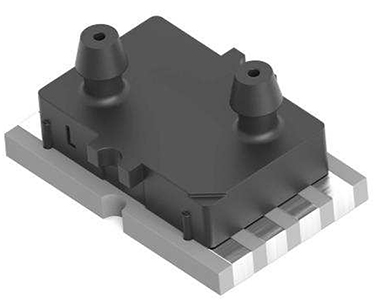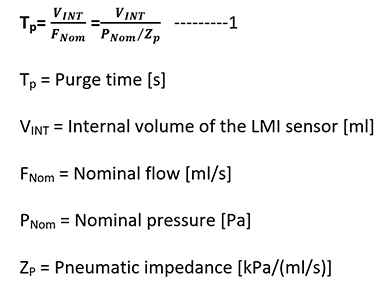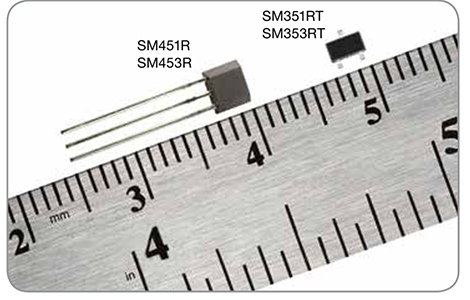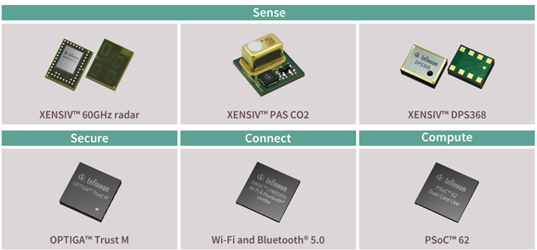Industry 4.0 heralds a new era of industrial development, building on the foundations laid by the first, second, and third industrial revolutions.
It describes how traditional manufacturing and industrial practices upscaled into modern innovative technology featuring automation. Smart sensors are central to this advancement, as they are the primary data collection points on the Internet of Things (IoT) network. They provide the essential raw data for control systems to make informed decisions. The combination of Smart sensor technology and IoT has led to several sensor-based applications. Sensors can monitor machine performance and environmental conditions and even detect the presence of people and objects, among many others. This article explains how sensors drive efficiency, scalability, and flexibility in industrial operations.
The impact of smart sensors in Industry 4.0- robotics, predictive maintenance, functional safety
Modern factory lines can detect the distance, size, shape, composition, and surface of an object to be manufactured while accurately tracking its movements. Technologies such as Time-of-Flight (ToF), RADAR, pressure, CMOS image, current sensors, and MEMS microphones are a few Industrial sensors that constantly engage in data acquisition, ensuring precision and reliability. Industrial sensors can detect position and speed. Besides manufacturing lines, sensors also play a crucial role in HVAC systems, industrial robotics, predictive maintenance, and safety operations. They are an integral part of heating, ventilation, air-conditioning, and refrigeration (HVACR) systems, helping to maintain a suitable indoor climate and boost the efficiency of the HVAC systems by integrating such systems with building automation systems. Sensors also input data for industrial robots, allowing automation within industrial environments.
HVAC systems: Traditional HVAC systems usually rely on temperature and pressure sensors. With the advent of Industry 4.0, there is an ever-increasing trend towards the inclusion of a wider arrow of sensors for improved monitoring and accuracy. This includes the integration of humidity and gas sensors into HVAC systems. Such inclusions reduce sensor failure, which may culminate in decreased efficiency, erratic operation, and inconsistent environmental control within infrastructures. Modern sensors have features to avoid false measurements. For example, board mount pressure sensors used in air handling systems function within the temperature range, which is usually narrow. Yet, these differential pressure sensors can precisely measure the volumetric flow of air, operating at only a few millibars. Additionally, the HVAC system monitors refrigerant or liquid/gas pressures in a few applications as part of a cooling or heating system. Depending on the application, these systems may experience rapid swings in temperature, necessitating reliable sensor capabilities.
TE's LHD, LME, and LMI

Figure 1: LMI Series – Digital Ultra Low Differential Pressure Sensors(Source)
The LMI Series of pressure sensors (shown in Figure 1) is based on thermal flow measurement to detect ultra-low-pressure ranges from 25 to 5000 Pa (0.1 to 10 inH2O). The design ensures high flow impedance and minimal flow-through leakage, resulting in superior sensitivity, especially for ultra-low pressures. Even when using long tubing, these sensors can maintain their sensitivity without any loss. They have on-chip temperature sensors and use real-time offset compensation and linearization techniques. Additionally, they have linearized digital I²C output with 16-bit sigma-delta A/D conversion for accurate readings.
The LMI series pressure sensors have minimised internal volume, allowing rapid response to gas mixture changes while maintaining high pneumatic impedance. Purge time (TP) can be estimated by the following equation: 1.

A more rugged and sealed pressure sensor is essential for higher pressure and most corrosive environments. TE offers the M3200, a pressure sensor designed using Microfused technology. This technology uses micromachined, silicon piezoresistive strain gages with high-temperature glass fused to a stainless-steel diaphragm. These gages are made of solid stainless steel, eliminating the need for any welds or O-rings that come in contact with the pressure media, making them compatible with a wide range of fluids and refrigerants. This sensor has correction coefficients stored in onboard memory and uses a digital circuit to correct the raw pressure signal at multiple points within the operating range. The correction mechanism ensures an accurate reading over various pressures and temperatures. In an Industry 4.0 setting, pressure sensors in HVAC systems monitor pressure fluctuations and anomalies in real time. Predictive maintenance algorithms analyze this data to identify equipment failure trends or patterns. For example, a sudden drop in air pressure might signal a leak in the system. Early detection of such issues allows maintenance teams to address them before they lead to production downtime or costly repairs. To learn more about pressure sensors,HVAC systems, click here.
Industrial robots: Industries require solutions that ensure accurate, safe, and cost-effective operations. With the rise of Industry 4.0, robots have become a standard feature on the factory floor as they increase efficiency, profitability, and production. Robots can perform pick-and-place, material handling, spot welding, assembly, etc. All these tasks are achieved as robotic automation advances, through sensing technology, which helps in data collection, transforming manufacturing floors into the connected, cost-effective, and reliable factories of the future. Sensors such as force, temperature, pressure, and position provide highly accurate measurements for precise movement control and accurate monitoring of system components are essential. To handle more challenges in the industrial environment, accuracy and precision are more important factors to be considered.
For example, in collaborative robotics, the sensors must not only detect the presence of nearby workers but also prevent colliding with them. Industrial environments need sensors with variable sensing ranges and resolutions that can withstand dirty and harsh environments.
Position sensors with Anisotropic Magnetoresistive (AMR) technology provide excellent precision and reliable, accurate measurements in extreme environments, including elevated temperatures. These sensors are vital in many industrial robotic applications. Advanced sensors are necessary for demanding environments, such as those exposed to oil, dirt, and dust. They must perform in toxic conditions, and their packages must be flexible with multiple orientation options, ensuring easy integration into almost any automated assembly process.

Figure 2: Magnetoresistive Sensor ICs SM351RT, SM451R, SM353RT, SM453R(Source)
Honeywell’s Standard Power Series Magnetoresistive sensors, shown in Figure 2, are ultra-sensitive devices designed for applications that need durable and reliable speed or position monitoring for large air gaps or small magnetic fields in standard power (typically 3 Vdc to 24 Vdc). They do not require identifying the magnet's polarity as the sensor responds to north or south pole, simplifying the installation and reducing overall system costs.
Smart factory and industrial internet of things (IoT sensors)
A Smart Factory is a digitised floor structure that collects and shares data among the interconnected machines, production systems, and devices. The Industrial Internet of Things (IIoT), on the other hand, represents the latest trend impacting innovations in connectivity and machine optimization. The IIoT, using sensors and intelligent decision-making, transforms how the industry works with smart automation.
Building a smart factory infrastructure with sensors and automating industrial processes results in increased production, reduced operating costs, and optimized asset use. Smart IIoT sensors help read measurements, predict failure, monitor levels, and enhance smart factory capabilities. Implementing IIoT sensors demands precise measurements in harsh environments and conditions to effectively relay sensor data to various connected equipment and processes. From compact sensors with multiple digital output signals to wireless sensor technologies that include humidity sensors, vibration sensors, proximity sensors, gas sensors, and current monitoring sensors, security sensors are employed to provide diverse solutions to enable Industry 4.0 and the Industrial Internet of Things (IIoT) in smart factory.
An IoT solution consists of microelectronics such as sensors, actuators, microcontrollers (MCUs), communication modules, and security components. These components measure and process the relevant data and establish connections to the internet. Integrating IoT devices into a network enables intelligent processing of a large amount of data and a stable and secure connection to the cloud.
To overcome such fundamental challenges and expedite development, a dedicated development platform is essential, allowing quick, easy, and secure implementation of ideas. It facilitates fast prototyping and development based on the required application of sensors.
Consider an example of Infineon’s XENSIV™ connected sensor kit (CSK) equipped with the XENSIV™ BGT60TR13C radar and XENSIV™ PAS CO2 sensors. CSK includes four fundamental building blocks.

Figure 3: Components in Infineon’s XENSIV™ connected sensor kit(Source)
Sense: The sensing part has sensors suitable for industrial environments, such as XENSIV™-DPS368 barometric pressure, XENSIV™ BGT60TR13C 60 GHz radar, and XENSIV™ PAS CO2 sensor, all integrated into the CSK. The sensing elements include voltage regulators, voltage converters, and oscillators.
Compute: The CSK features the PSoC™ 62, a low-power and high-performance 32-bit Arm® MCU designed for IoT applications. It has a ModusToolbox™ software environment to facilitate the evaluation and development of the PSoC processing platform. The algorithm layer includes the entire signal-processing chain from sensor raw data to processed application output.
Connect: For devices to communicate with each other and with the cloud, modules need to connect to the IoT. For IoT designs with a small form factor, the AIROC™ connectivity combo module integrates dual-band 2.4 GHz and 5 GHz Wi-Fi 4 (802.11n) and Bluetooth® 5.0 into a single-chip solution.
Secure: Infineon’s OPTIGA™ Trust M offers an ideal solution for embedded security solutions and secure mobile connectivity when using the CSK.
IoT sensors can acquire, process, and interpret data, as well as communicate and interconnect with other devices. For example, in presence detection scenarios, smart devices quickly notify users of nearby human targets. Infineon’s high-sensitivity radar-based presence solution provides the ability to detect not only macro (large) movements but also micro (subtle) movements. Thus, IoT connectivity enhances user interaction with the devices, eliminating the need for users to interact with the sensing elements to trigger a response physically.
Farnell has partnered with suppliers catering to various motor control and industry-related accessories such as Magnetoresistive Sensors,Digital Ultra-low differential pressure sensors,Sensor kit and evaluation boards.
Conclusion
Sensing technologies, when integrated with an extensive network of machines, can accurately process copious quantities of data, prompting timely actions and reducing human errors. For example, sensors embedded in HVAC systems excel at performing ultra-low-pressure measurements. They can also accurately sense pressure fluctuations in refrigerant gases, even with rapid temperature changes, due to temperature compensation within the sensor IC. AMR sensors have a crucial role in position monitoring in robotics, particularly in scenarios involving large air gaps or small magnetic fields. Sensors are the foundations for smart factories in an industrial environment. With connectivity and sensing technology, sensors have transformed automation of the industrial environment into reality. To learn more about MEMS sensors in industrial applications,Industrial automation click here.






